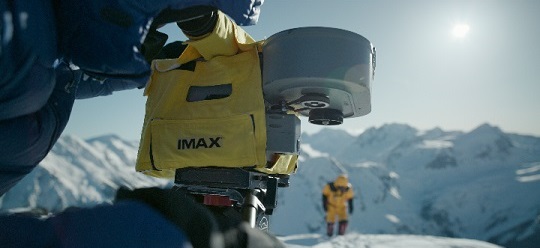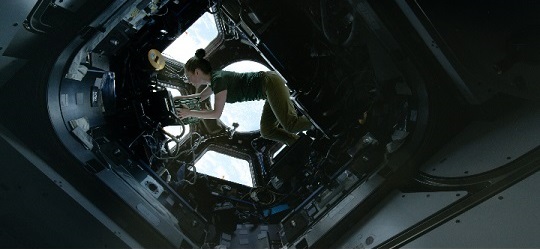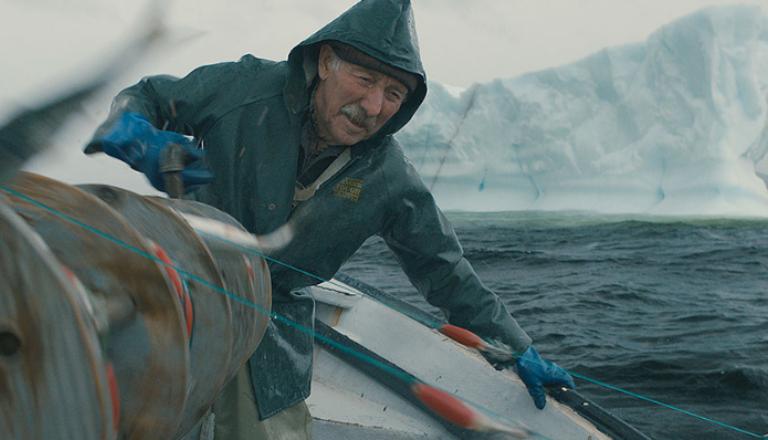For more than 50 years, IMAX has given us the gift of revolutionary filmmaking.
The company’s films and theatre technologies have thrilled millions of viewers taking them to the edge of the human experience—and often beyond.

With curiosity and courage, IMAX filmmakers, engineers, and designers have shattered the boundaries of conventional cinematic storytelling. From the peak of Mount Everest to the depths of the Atlantic; from the International Space Station to the beaches of Dunkirk, IMAX has seamlessly fused entertainment and knowledge without losing sight of its fundamental mission: to share the story of the great human adventure.

But IMAX brings far more to the world of exports than documentaries and films. It is, at its heart, an entertainment technology company with a worldwide reputation for engineering and design brilliance.
The company’s state-of-the-art proprietary technology is conceived and built in-house and then licensed to an ever-growing number of international customers. Each element in the IMAX supply chain is fully integrated—camera, sound, projection technology, theatre design—with all these variables working together to create what is widely acknowledged as the “gold standard” for the entertainment experience.

With the support of Export Development Canada (EDC), IMAX has exported Canadian technologies around the world while reinforcing the strength of the maple leaf brand.
Exports come in many shapes and sizes and while IMAX is known as an innovative film company, it’s also one of Canada’s most fascinating export stories.
If Hollywood is looking for the next great business movie, the evolution of IMAX—from art house to powerhouse—might be a good place to begin.
Exports come in many shapes and sizes and while IMAX is known as an innovative film company, it’s also one of Canada’s most fascinating export stories.

1967. Coffee costs a dime. The Leafs win the cup. Penny Lane tops the charts and two young Canadian filmmakers are the talk of Expo ’67.
Their spark of genius was to immerse the viewer in not just the story, but the actual viewing experience through the use of non-conventional projection methods and multiple screens.
Three years later when IMAX unveiled its first big-screen production, the company became the talk of film world. Tiger Child was presented on stock 10 times larger than conventional 35mm film and powered by a projection system strong enough to illuminate an eight-storey tall screen. Not since the introduction of “sound-on-film” had there been such a radical change in the technology of filmmaking.

IMAX soon began installing its projection systems in museums, science centres, and specially designed theatres where audiences could enjoy the stunning panoramas of space, science, and nature.
Sunday afternoons became family outings to experience the beauty of an earthrise through the windows of a spaceship, to glide effortlessly across the Savannah looking down on herds of zebras and elephants, or dive deep into the ghostly depths of the ocean. IMAX “big screen/big sound” documentaries became both a beloved family outing and a cinematic phenomenon.
In the mid-90s, current IMAX CEO Richard Gelfond and partner Brad Wechsler bought the company and set off on their own big journey. Their goal was to build IMAX into a worldwide commercial brand. For that to happen, they needed to entice Hollywood’s most celebrated producers and directors to make IMAX films.

In Hollywood, producers liked what they saw on the screen, but the studios were hesitant to greenlight IMAX releases, insisting more IMAX screens were needed to justify the distribution costs. Meanwhile, theatre owners felt that more IMAX releases were needed to offset the expensive renovations.
A classic catch-22
But as the saying goes: “fortune favours the brave”, so when a Toronto-based computer scientist wrote an algorithm converting existing movies into the big-screen IMAX format, the fates smiled. Suddenly, the stock of available films increased dramatically.
By 2001, the digital age was picking up speed. In homes all over North America, families were shifting from VHS to DVD. Movie theatres were changing too, replacing film projectors with digital systems.
Then came Avatar
When the IMAX conversion of Avatar was released, it became a global phenomenon. American scalpers charged $100 a ticket, while across Asia, movie fans lined up for hours. Avatar did more than $250 million in worldwide ticket sales driven in large part by the thrill of watching a heart-pounding space adventure film on the big IMAX screens.
Suddenly, Hollywood looked at the company with fresh eyes and, as they say in the movies, “It was the beginning of a beautiful friendship.”

Soon, some of the biggest names in entertainment embraced the format, boosting the IMAX profile and prestige. Christopher Nolan, Tom Cruise, J.J. Abrams, and many others, found IMAX technologies to be the perfect tools to help shape their creative visions.
As it celebrates 50 years, IMAX has reached a rare place in its journey: It’s lauded for both its artistic vision and its business acumen. The company has won a galaxy of industry awards and in 1996 was honoured with an Academy Award of Merit for its scientific and technical achievements.
EDC has been a proud partner with IMAX for many years, offering extensive financing support. We have also enabled international customers to purchase IMAX equipment through the guarantee of loans and lines of credit.





